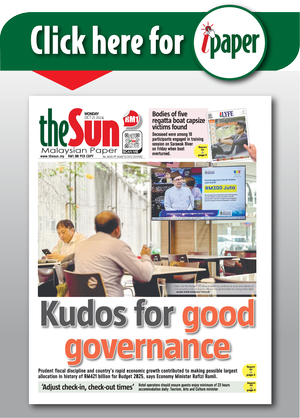KUALA LUMPUR: Malaysia’s takaful industry has notched a compound annual growth rate (CAGR) exceeding 10% over the past decade, more than double the 3% to 5% expansion seen in conventional life and general insurance, said Malaysian Takaful Association (MTA) chairman and Prudential BSN Takaful Bhd (Malaysia) CEO Wan Saifulrizal Wan Ismail.
This development, he added, reflects the demand for syariah-compliant protection products and a rise in market share.
“The takaful CAGR for the past 10 years is above 10%, both family and general. If you compare it to life insurance and general insurance, it’s between 3% and 5%. So it’s easily double or triple the growth rate over the 10-year period,” he said in a panel session at the Global Islamic Finance forum 2025 today.
Wan Saifulrizal said takaful’s share of new business over the decade has doubled to 40% in 2024 from just above 20%.
“So we can see that demand is there, momentum is there, and now we’re probably at a crossroads in terms of we still have challenges in relation to the business.”
Wan Saifulrizal said the MTA, recognising the challenges, is assessing the next steps needed to strengthen the industry and align with Bank Negara Malaysia’s Financial Sector Blueprint 2022–2026.
The association introduced its Value-Based Intermediation for Takaful initiative in 2022 to embed ethical and sustainable practices across the sector, he added.
Taking all that into account, Wan Saifulrizal said, the MTA launched the Hijrah 27 framework last year with the aim to upskill industry players and raise performance standards across the sector, guided by a vision to strengthen the takaful industry and make it “Takaful for All”.
The framework is built around two core missions – to make takaful a household name and to accelerate quality growth across the industry.
To track progress, the MTA has identified eight key performance indicators covering gross contribution, customer retention, talent development, social takaful funds, penetration rate, MSME coverage, collaboration within the Islamic ecosystem, and internal transparency.
“A comprehensive programme management structure has also been put in place to oversee progress towards delivering the Hijrah 2027 framework,” Wan Saifulrizal said.
According to a Fitch Ratings report in March, the industry’s momentum is expected to continue.
Regulatory measures to strengthen the takaful system, macroeconomic stability, digitalisation and increased awareness of takaful products will support sustained growth of Malaysia’s takaful sector in 2025, it said.
Fitch reported that strong investment returns helped family takaful net income surge 60% in the first half of 2024, while general takaful profits rose to RM73.1 million, supported by fewer flood claims and steady investment income.
“However, rising medical inflation has increased health takaful costs, prompting gradual repricing and the central bank’s September 2024 mandate for co-payment options to keep premiums affordable,” it said.
Last week, Bank Negara Malaysia said it will finalise the design of a base medical and health takaful product by the end of 2025, with the launch now targeted for 2027 to improve access and affordability.
The Basic Medical and Health Takaful Insurance, which supports a fixed-fee, diagnosis-based hospital payment model known as the Diagnosis-Related Group (DRG) system, was initially scheduled for rollout in 2026.
The DRG implementation, originally planned for mid-2025, has been postponed to 2027 to allow time for system development, cost-model finalisation, hospital data integration and pilot testing.









